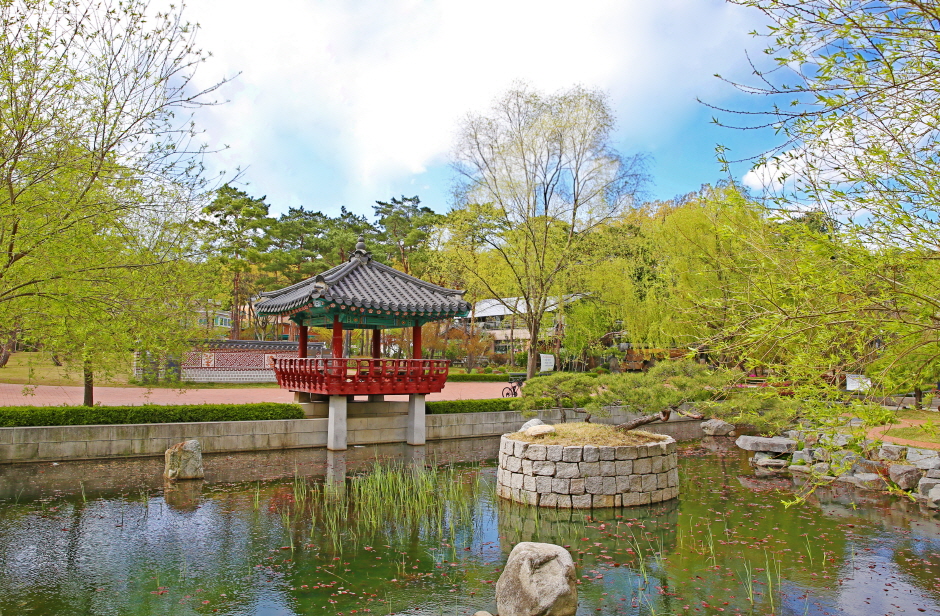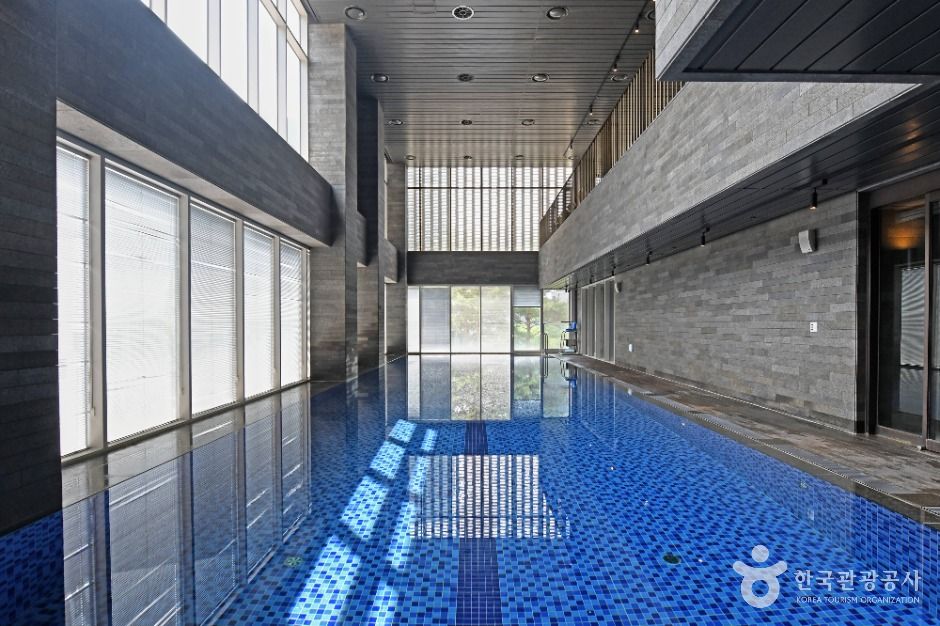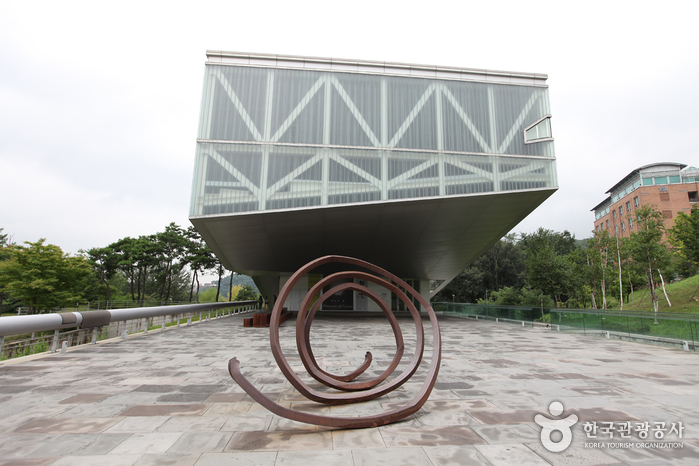M.Ffin - Guro Branch [Tax Refund Shop] (엠핀 구로)
11.3Km 2024-04-22
1F, 569, Siheung-daero, Guro-gu, Seoul
-
Seoul Doseonsa Temple (도선사(서울))
11.3Km 2025-06-25
504 Samyang-ro 173-gil, Gangbuk-gu, Seoul
Doseonsa Temple was established 1,100 years ago during the latter part of the Silla Kingdom when the renowned Buddhist priest Doseonguksa was traveling through the mountains. After visiting the site, Doseonguksa made a prophecy that led to the construction of the temple. According to legend, he used only his walking stick to carve the large Bodhisattva that sits at the temple. Interestingly enough, the statue does not show any evidence of chisel marks, further adding to the mystery of how the statue was made.
During the 7th year of King Gwangmu of the Joseon dynasty, Doseonsa Temple was officially named the representative temple of Korea with the purpose of promoting Cheongdamdaejongsa's Korean Buddhism movement, aiming at a religious revival. Due to these special circumstances Deseonsa Temple gained a high reputation and much recognition, which have held strong to this day.
Inside the temple, visitors can view the remains and written works of Cheongdamdaejongsa in the Cheongdamdaejongsa Memorial Hall. Next to the road leading to Cheonbuljeon Hall is a pond where you can toss a coin and make a wish and just past Yongammun Gate is a hiking path connecting Baegundae Cliff and Insubong Peak. Inside the Ksitigarbha Hall are portraits of President Park Chung-hee, Yuk Yeong-su, and Hyundai Chairman Chung Ju-yung. In front of the hall is a tree that is said to have been planted by a Buddhist priest who brought it from India 200 years ago. Historical artifacts can be found throughout the temple.
Olive Young - Gayang Station Branch [Tax Refund Shop] (올리브영 가양역)
11.3Km 2024-04-18
1F, 476, Yangcheon-ro, Gangseo-gu, Seoul
-
Wondangsaem Park (원당샘공원)
11.3Km 2024-02-15
16 Haedeung-ro 32ga-gil, Dobong-gu, Seoul
Wondangsaem Pond is named after the Wondang village, where the Yun family settled about 600 years ago. It is a park that harmoniously blends a traditional pond with a Hall of Rejoicing Pavilion called Samojeong, a wall fall, and a floral wall. During autumn, the golden foliage of an 800-year-old ginkgo tree enriches the surroundings, and a deck path around the tree offers a delightful stroll.
Heidi Haus (하이디하우스)
11.4Km 2025-09-24
11, Seongchon 4-gil, Seocho-gu, Seoul
Heidi Haus is a private club that offers a premium wellness and lifestyle in the heart of the city. Its customized programs are designed not only for restoring health but also for achieving peace of mind. With a spa using natural bedrock water, a state-of-the-art fitness center, and restaurants and cafés that guarantee comfortable relaxation, Heidi Haus provides everything for a well-balanced life. The highlight is its spa, themed around 12 motifs such as rose, lavender, and beauty. It uses mineral-rich bedrock water drawn from 1,000 meters underground, which is known to help with skin hydration, blood circulation, fatigue recovery, and immunity strengthening. The spa also features a sauna zone with five distinct styles, including far-infrared, steam, and Finnish saunas.
Olive Young - Guro Digital Complex Branch [Tax Refund Shop] (올리브영 구로디지털)
11.4Km 2024-04-22
1F, 43, Digital-ro 34-gil, Guro-gu, Seoul
-
Aritaum - Guro Digital Complex Station Branch [Tax Refund Shop] (아리따움 구로디지털단지역)
11.4Km 2024-04-18
1F, 563, Siheung-daero, Guro-gu, Seoul
-
Gyujanggak Library of Seoul National University (서울대학교 규장각)
11.4Km 2022-07-27
1, Gwanak-ro, Gwanak-gu, Seoul
+82-2-880-6030
Gyujanggak Library was founded in 1776 during the reign of King Jeongjo, the 22nd ruler of the Joseon dynasty, at which time it was located within the Changdeokgung Palace grounds. It functioned as the royal library, which housed writings of the previous kings, their relics and books from home and abroad.
Today Seoul National University maintains the items of Gyujanggak in a traditional Korean building which is equipped with state-of-the-art facilities necessary for the preservation of cultural heritages. Moreover, Gyujanggak Library of Seoul National University collects and publishes books from a variety of sectors such as politics, economy and society.
Gyujanggak now houses more than 270,000 items including 7 national treasures, 8 treasures, 180,000-plus old books, about 50,000 documents and 18,000 printing blocks. Among them, Joseon Wangjo Sillok (the Annals of the Joseon Dynasty, a National Treasure), Seungjeongwon Ilgi (the Diaries of the Royal Secretariat, a National Treasure) and Uigwe (the Royal Protocols of the Joseon Dynasty) have been designated as UNESCO World Cultural Heritages.
Museum of Art, Seoul National University (서울대학교미술관)
11.4Km 2021-03-03
1, Gwanak-ro, Gwanak-gu, Seoul
+82-2-880-9504
Museum of Art, Seoul National University was established as an independent institution in 1995 after several years of development under the Department of Modern Art at Seoul National University Museum. It is the first university art museum in Korea dedicated exclusively to modern and contemporary art. Designed by the world-renowned architect Rem Koolhaas, the museum was constructed and donated by the Samsung Group. It has evolved into a cultural complex equipped with exhibition halls, auditorium, classrooms, and other educational facilities. The museum places special emphasis on educational programs that are open not just to the university's students and faculty, but also to the local community. In addition to modern and contemporary artworks, the museum brings together and exhibits diverse forms of art and culture such as architecture, music, literature, film, and theater.
Seoul National University (서울대학교)
11.4Km 2023-07-07
1, Gwanak-ro, Gwanak-gu, Seoul
+82-2-880-5114
Founded in 1946, Seoul National University is the most reputable university in Korea based on its long academic history and tradition. It was the first national university in Korea established by merging several institutions of higher education around the Seoul area, including Kyongsong University
![M.Ffin - Guro Branch [Tax Refund Shop] (엠핀 구로)](http://tong.visitkorea.or.kr/cms/resource/46/2880246_image2_1.jpg)

![Olive Young - Gayang Station Branch [Tax Refund Shop] (올리브영 가양역)](http://tong.visitkorea.or.kr/cms/resource/04/2880104_image2_1.jpg)


![Olive Young - Guro Digital Complex Branch [Tax Refund Shop] (올리브영 구로디지털)](http://tong.visitkorea.or.kr/cms/resource/34/2880234_image2_1.jpg)
![Aritaum - Guro Digital Complex Station Branch [Tax Refund Shop] (아리따움 구로디지털단지역)](http://tong.visitkorea.or.kr/cms/resource/42/2880242_image2_1.jpg)


 English
English
 한국어
한국어 日本語
日本語 中文(简体)
中文(简体) Deutsch
Deutsch Français
Français Español
Español Русский
Русский